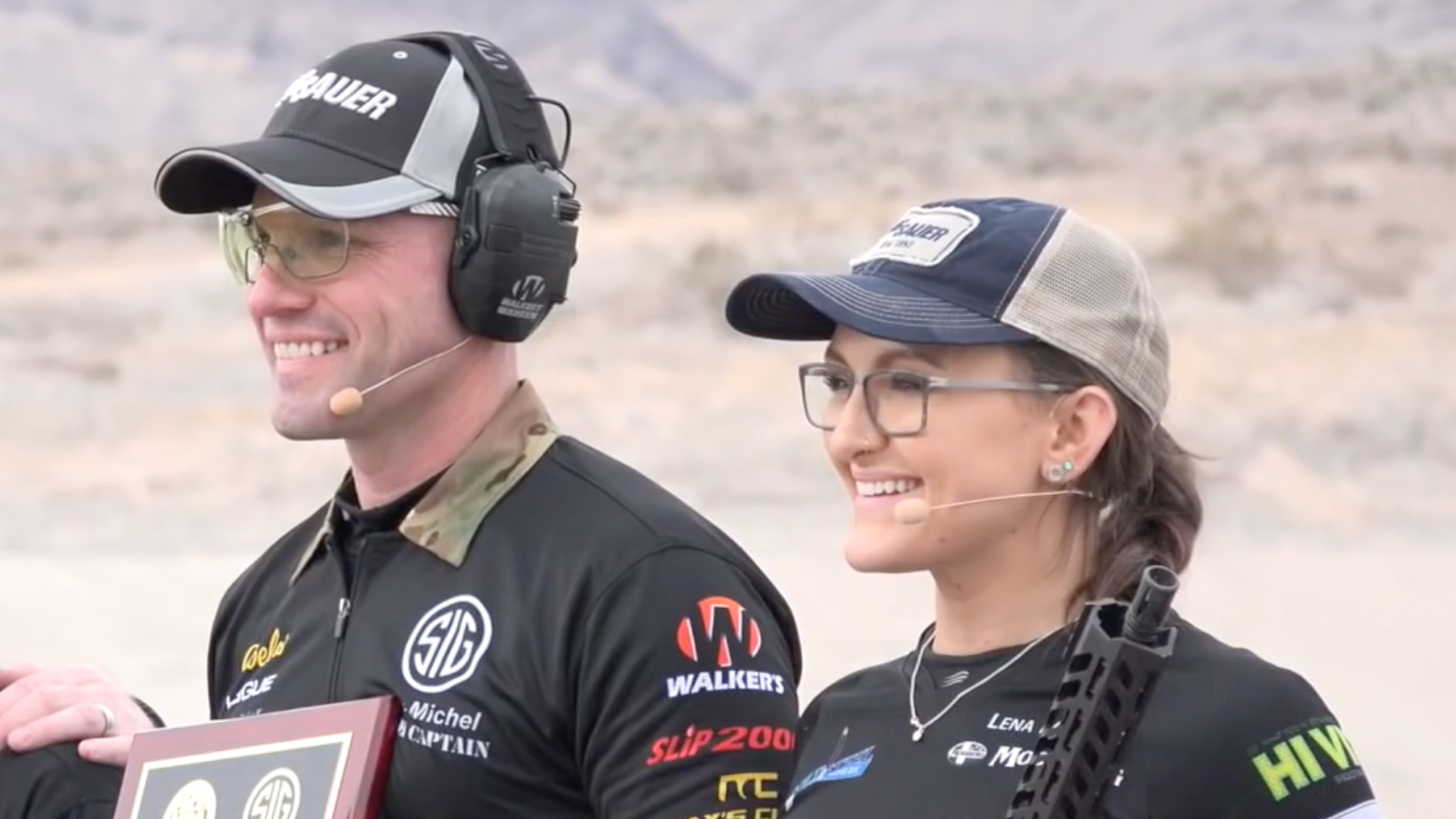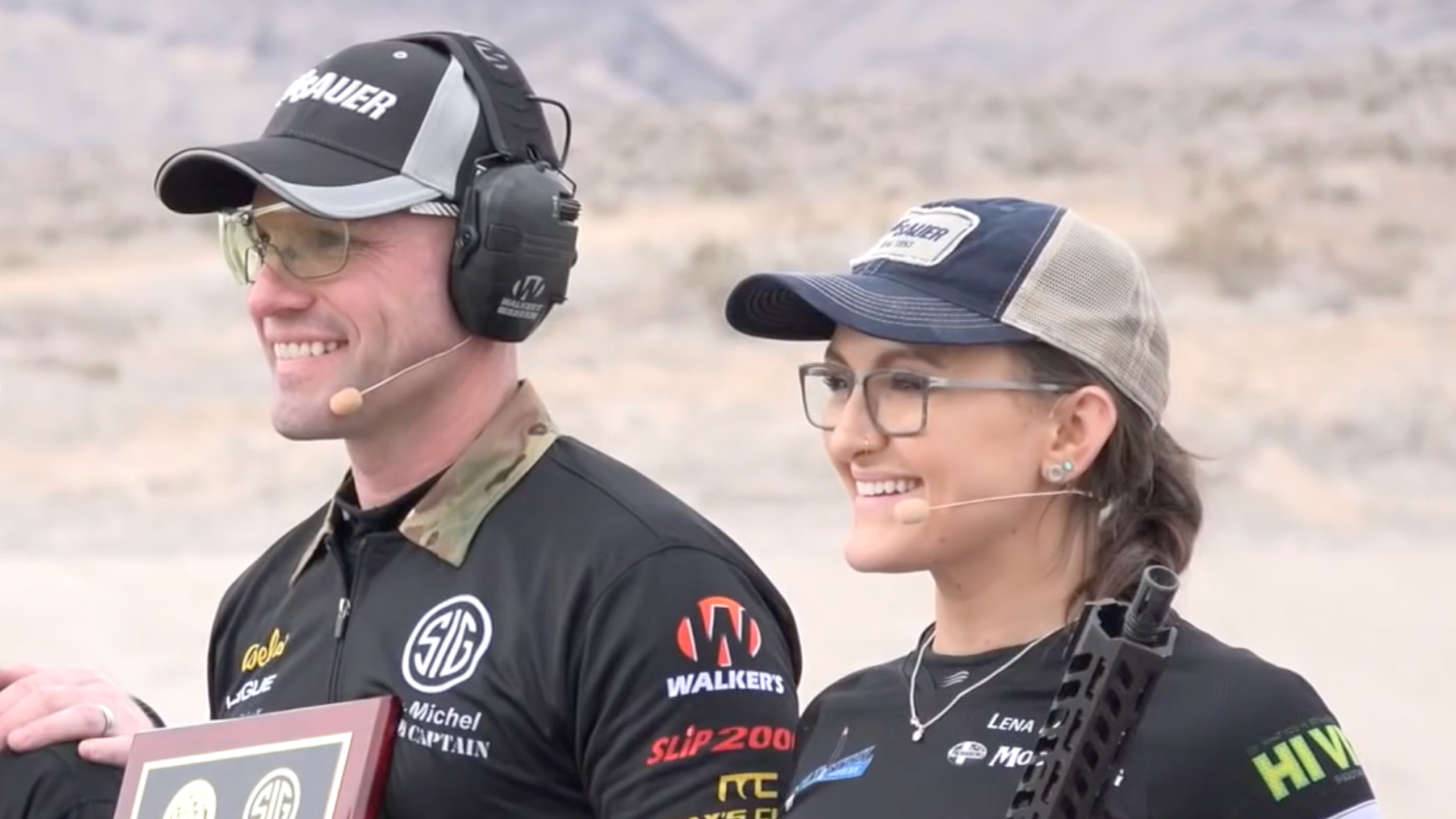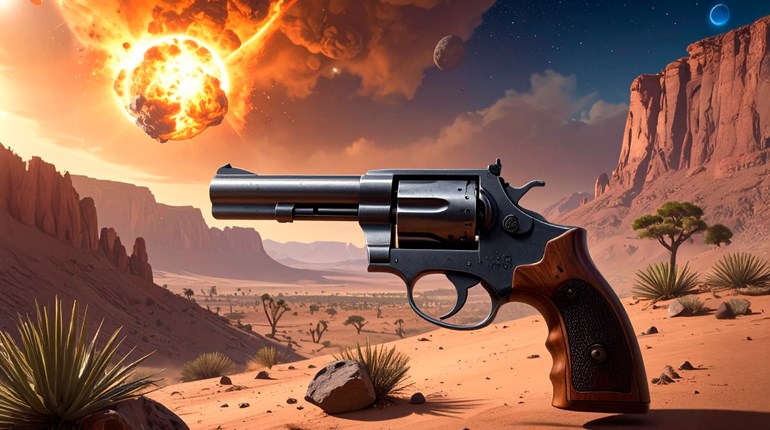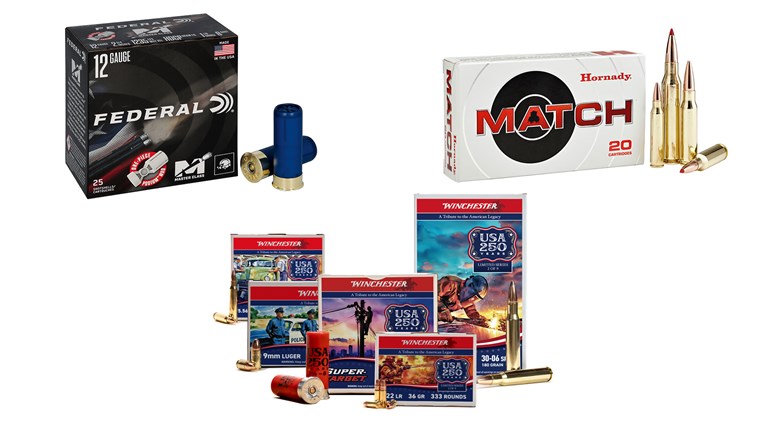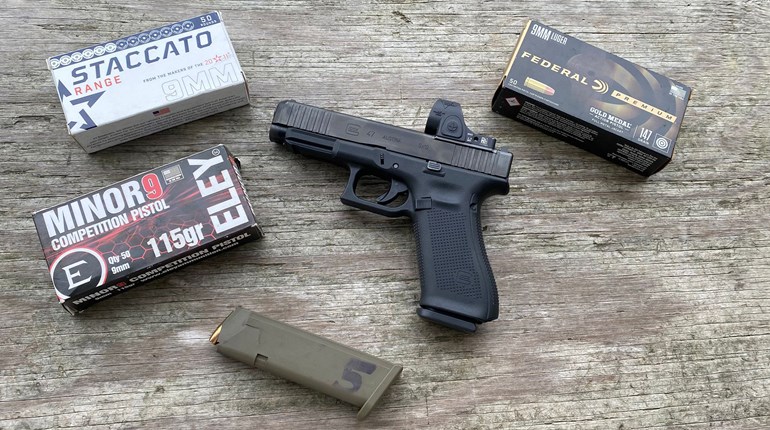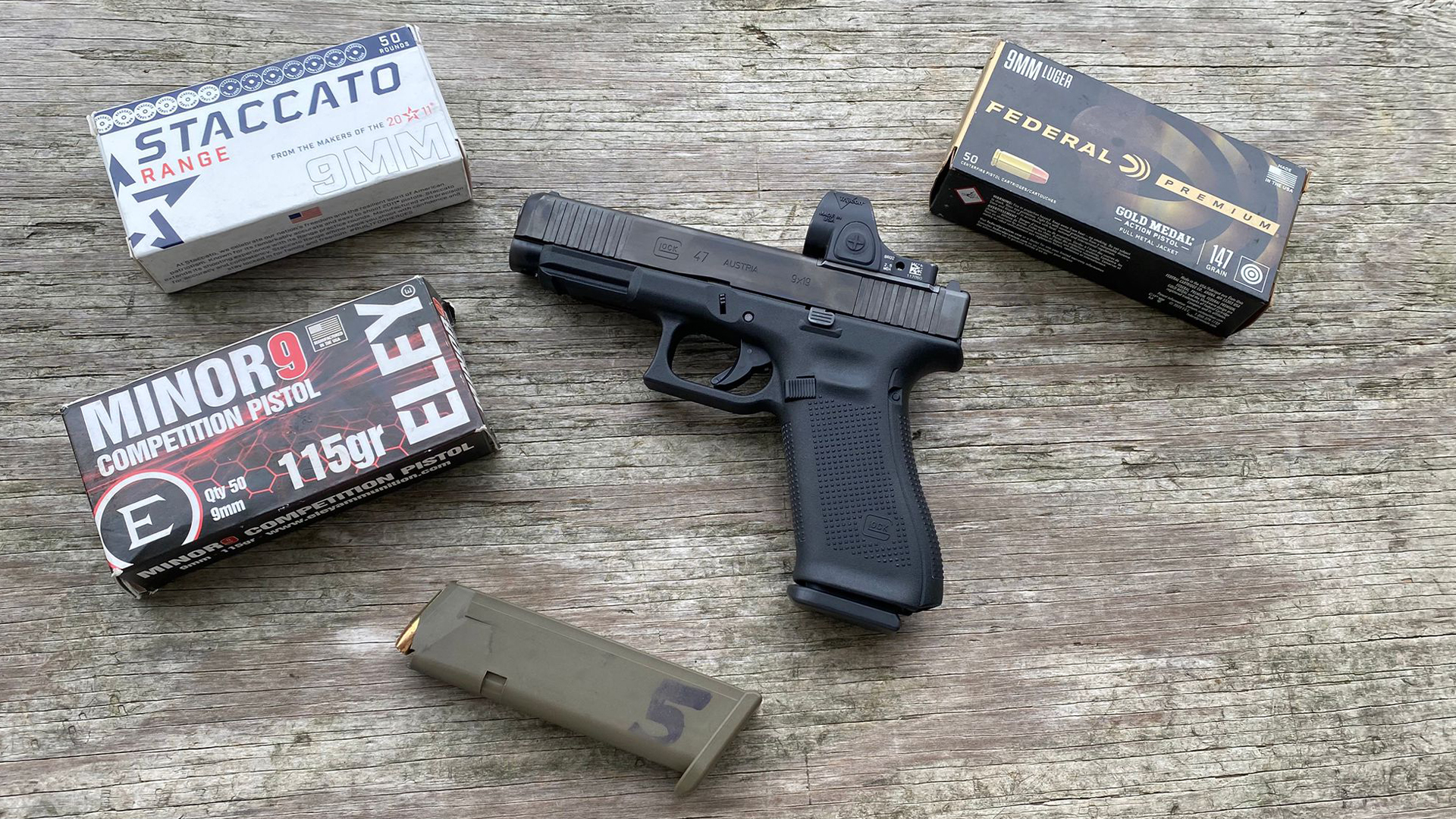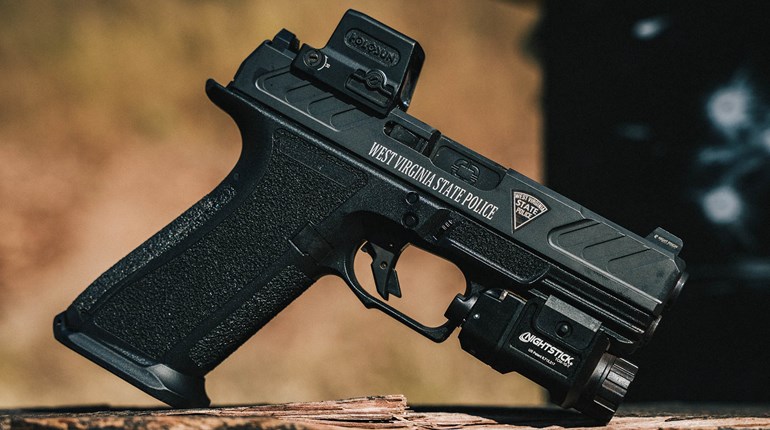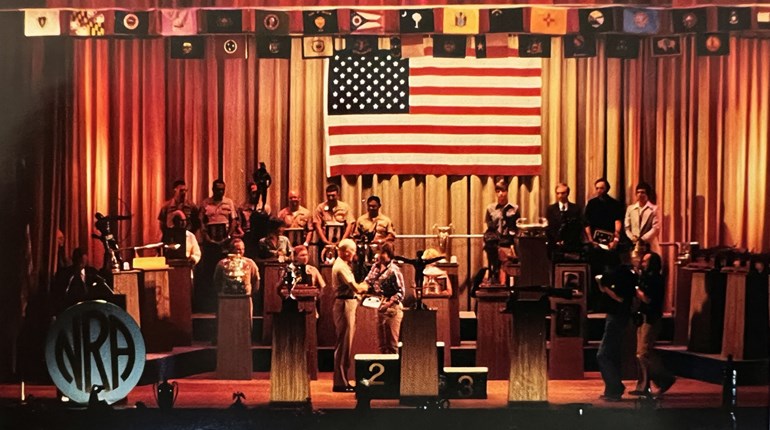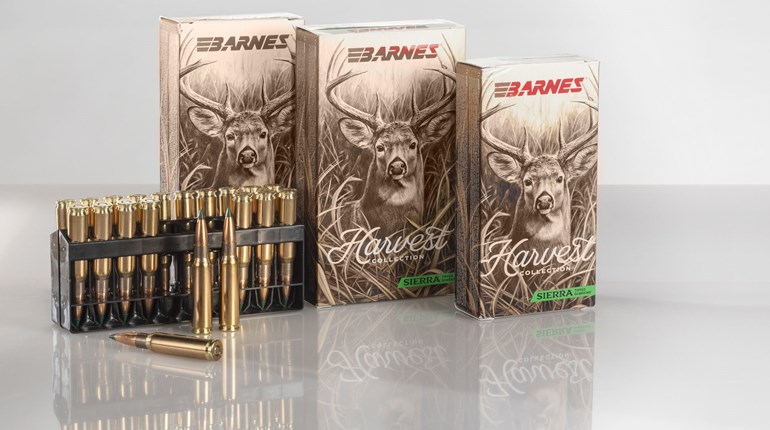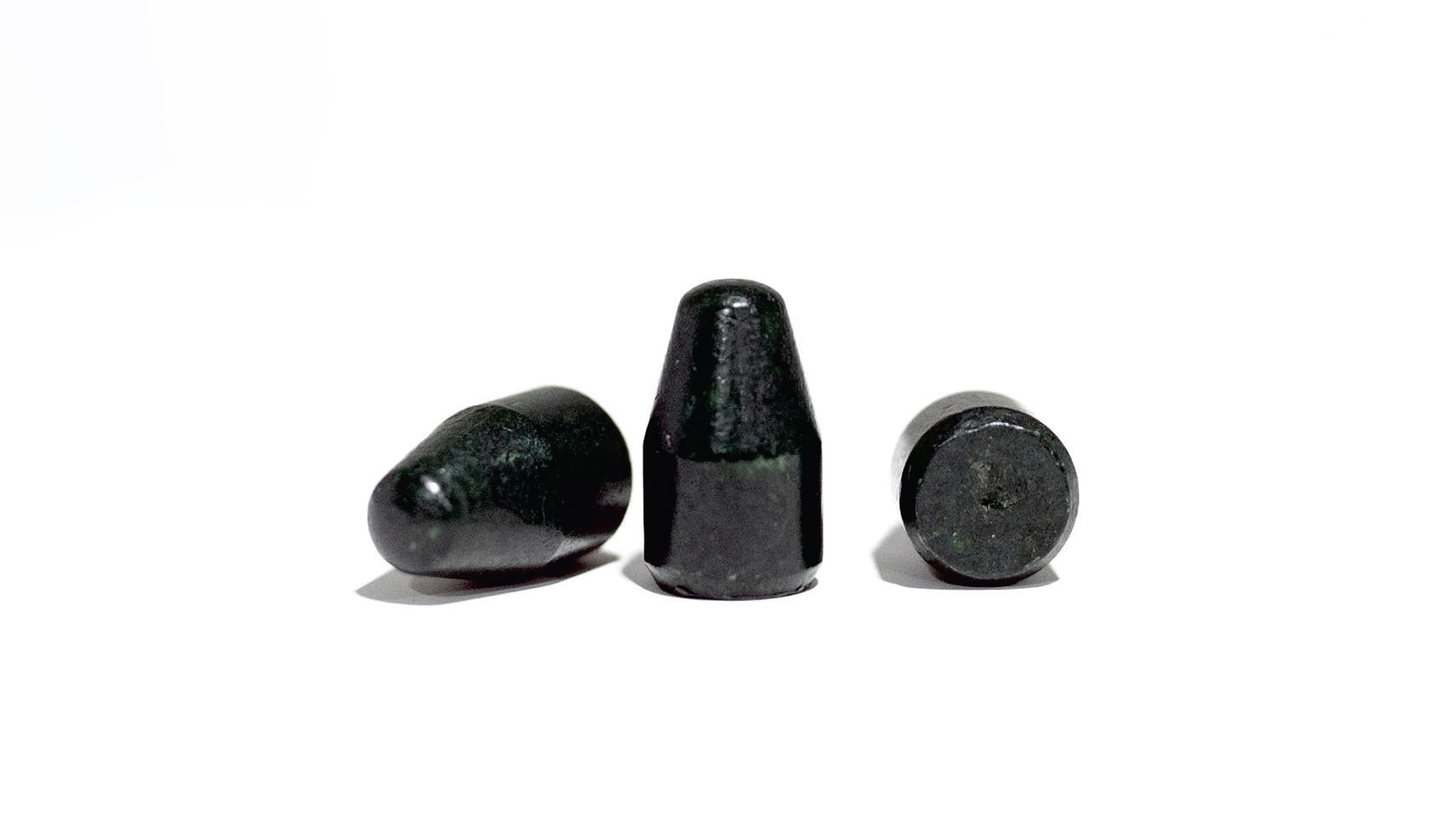
Lead bullets have been a mainstay for competitive shooters for as long as there’s been competitive shooting. That’s because cast or swaged lead bullets have some advantages over jacketed or plated slugs.
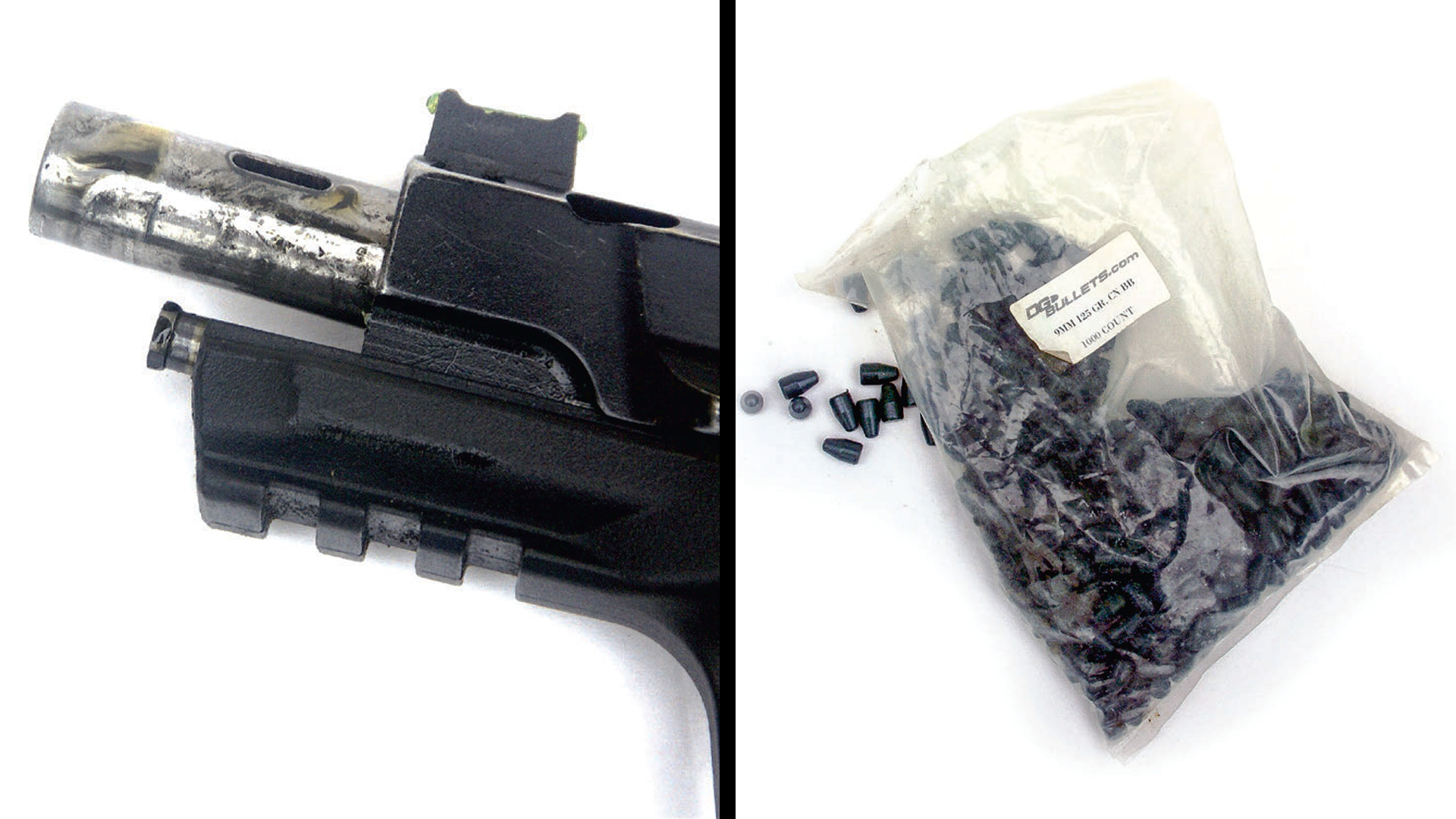
Cost is a significant factor. They are noticeably less expensive than jacketed or plated offerings. Another advantage is that lead offers less resistance in the bore and allows them to achieve the same velocities with a bit less powder than jacketed or plated bullets, which is handy when meeting a Power Factor (PF) is required. The lesser resistance also translates into increased barrel life. A high-volume shooter can wear out a barrel with jacketed bullets, but that’s hard to do with lead.
However, with the good comes the bad and lead slugs have two major drawbacks. One is a lot of smoke. This is especially true of cast lead bullets with a grease groove. That waxy lube can burn almost as dark as black powder. Leading, especially with the softer swaged bullets, is another problem. It can build quickly and is not easy to get out. The most effective method is with a spiral-wound stainless steel brush that has the power to physically move lead, and a lead solvent like Shooter’s Choice Lead Remover or Montana Extreme Cowboy Blend.
Smoke and leading are the ills of lead bullets. But a cure came from an unexpected place.
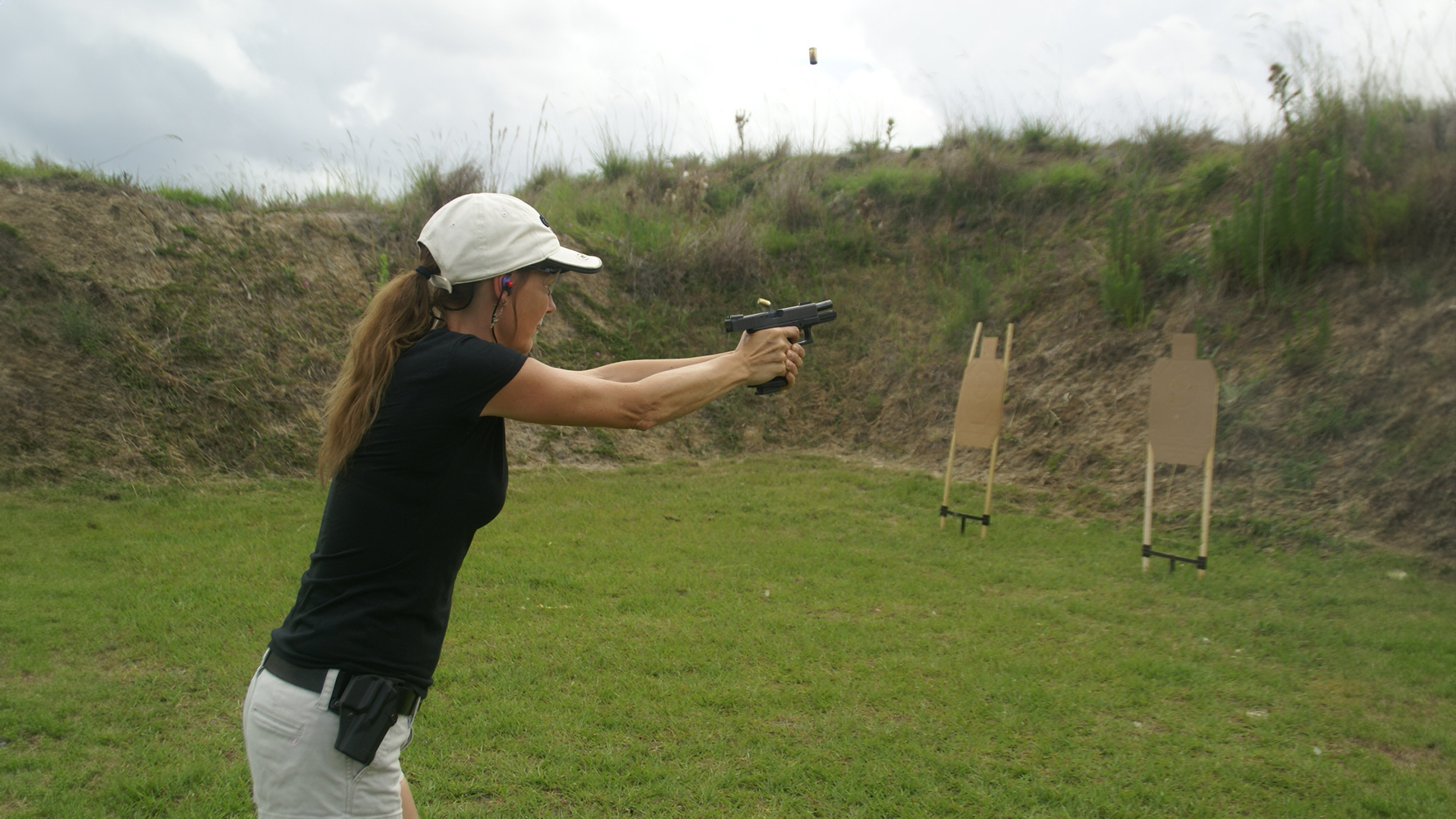
More than 25 years ago, an Australian company, J&M Specialty Products, created Hi-Tek coating. This is a polymer-based application for lead, and as such it’s somewhat akin to Federal’s highly acclaimed Syntech handgun line and CCI’s Clean-22 rimfire ammo. The product didn’t reach American shores until about 10 years ago, but had been in widespread use in Australia for years. Several American bullet makers began offering Hi-Tek coated lead bullets, with some even selling the coating to allow home bullet casters to coat their own. Others modified the formula to their own proprietary blends, and there are now several companies selling cast lead coated component bullets. The lead price advantage still exists with coated lead, and while I haven’t shot all the various makes, the Bayou and DG Bullets that I currently use average about $82 to $84 per thousand. A plus to coated bullets is that they can be had in different colors, which is handy for separating different Power Factor loads. Additionally, while lead bullets are not recommended for the polygonal rifling in Glock barrels, coated lead bullets work just fine.
The coating reduces smoke to the point where it becomes a non-factor and leading is eliminated. I’ve shot thousands of Bayou and DG coated bullets in revolvers, semi-automatic handguns and pistol-caliber carbines. After a 200-round match day, barrel cleaning is nothing more than a solvent soaked patch, a quick brush out with a copper brush, one more solvent patch and finish with a clean patch. It takes mere minutes and the barrel looks as pristine as the day it left the factory.
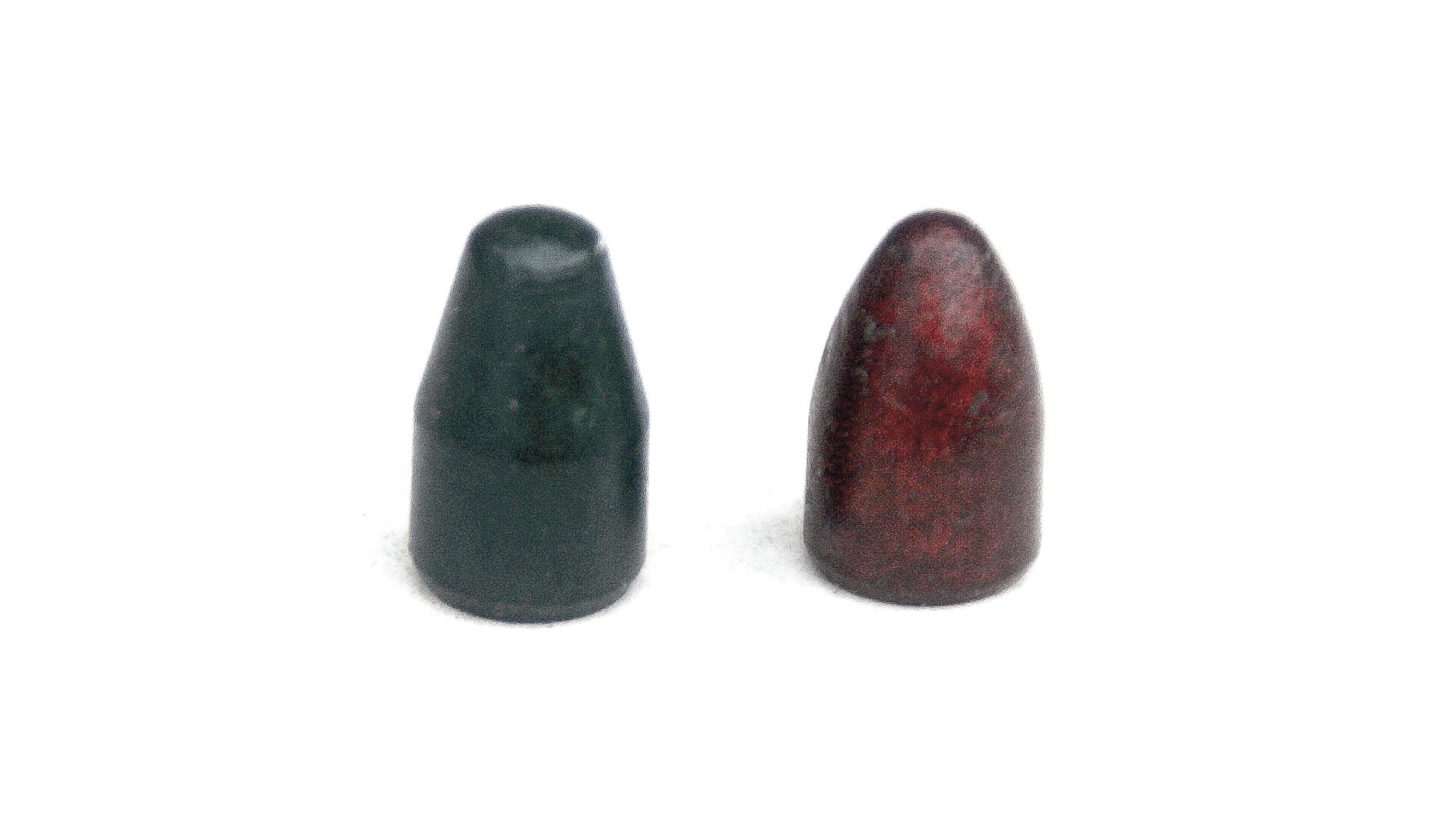
Coated bullets load in the same manner as lead, but there are two things to watch for. First, make certain that the belling die puts enough flare into the case mouth to avoid scraping the coating from the bullet when it’s being seated. Second, don’t over crimp as that can also remove the coating. A moderate taper crimp works best for me with either semi-automatic or revolver. If the coating is compromised, smoke and some leading can occur.
The various coated bullets are comfortable up to around 1,250 f.p.s. Some makers claim higher velocities, but most shooters consider 1,250 f.p.s. to be as far as they should be pushed. That figure is well within the velocities required to make the Major or Minor Power Factor required in many shooting sports. Depending upon bullet weight, the required velocities fall between 700 and 1,150 f.p.s. The lone exception is when loading 9 mm Luger or .38 Super to the +P levels needed to make Major in USPSA Open division. With bullet weights in the 115- to 135-grain range, they easily exceed 1,250 f.p.s., which can cause the bullet lube to melt off and leave a mess in ported or compensated barrels.
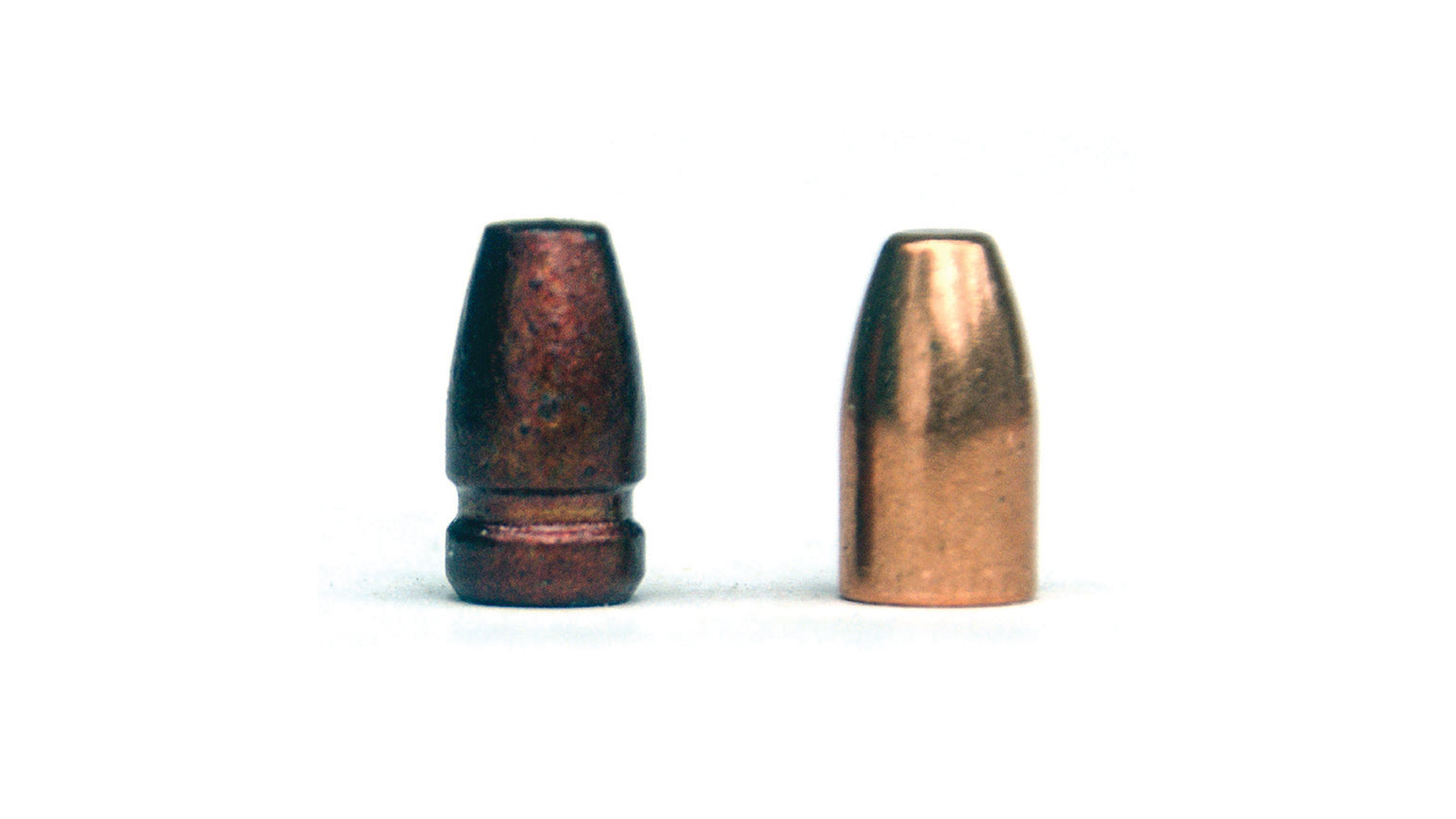
The lower bore resistance of coated lead bullets allows them to achieve the required Power Factor velocities with less powder than jacketed or plated slugs. Depending upon the profile of the coated bullet—whether it was originally cast with a grease groove that reduces the amount of bullet in direct contact with the bore or cast with a full bearing surface—coated lead bullets typically require anywhere from 0.3 to 0.6 grains of powder to achieve the same velocities as jacketed bullets.
That may sound insignificant, but it’s not. My 9 mm Luger Steel Challenge load is a 125-grain coated DG bullet ahead of 3.2 grains of VihtaVuori N320 for about 940 f.p.s. and a 116 Power Factor. That won’t cut it for USPSA or IDPA, but bumping the charge to 3½ grains gets 1,050 f.p.s. for a comfortable 130 PF. That’s only 0.3 grains of powder, but I can definitely feel the difference in recoil and see the difference in muzzle flip.
Despite the fact that coated lead bullets are relatively new, the ability to make the required Power Factor velocities with less powder, less recoil, less smoke, no leading and less expense has not been overlooked by experienced shooters. And that was amply demonstrated at the 2023 USPSA Nationals.
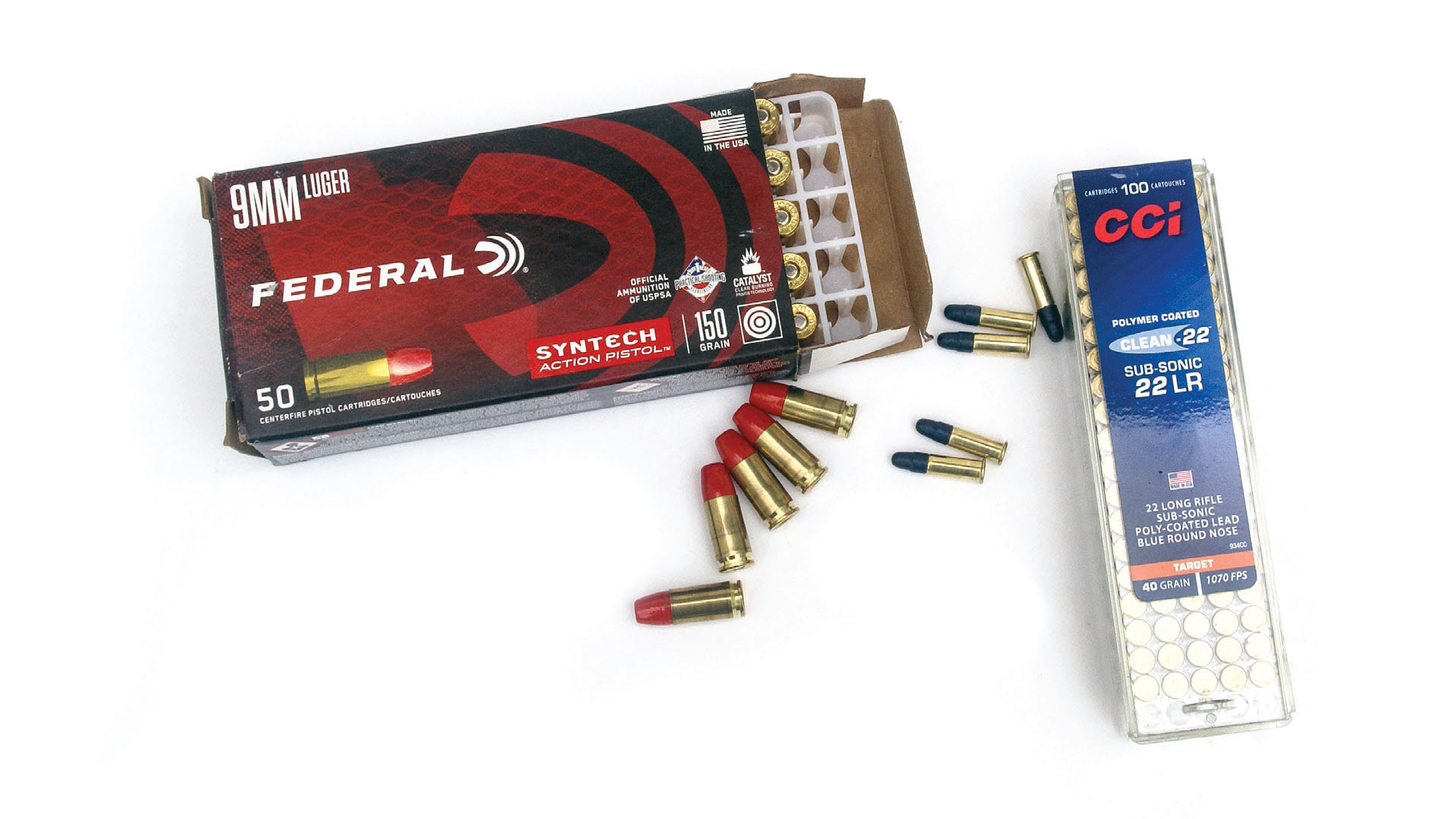
Amplifying a trend that has developed in recent years, not a single shooter in any USPSA division acknowledged shooting plain lead bullets. Breaking the results down by division shows some interesting results.
Open division can be shot Minor of Major scoring and 9 mm Luger is the minimum caliber for either. Many shoot 9 mm Major, which requires about 1,375 f.p.s. with a 124- or 125-grain bullet to make a 170 PF. One wouldn’t expect to see lead bullets there, but handloaded ammo was used by 80 percent of the shooters, with 69 percent shooting 9 mm Luger and 35 percent choosing .38 Super Comp. Jacketed bullets were used by 85 percent of the shooters, with a surprising 9 percent opting for coated lead.
Pistol-Caliber Carbine is another USPSA division where one would not expect to see much lead bullet usage, but 51 percent of the competitors handloaded and 28 percent did use coated lead. It’s worth noting that 22 percent of the shooters used factory fodder, and Federal makes a Syntech 9 mm pistol-caliber carbine load that is quite popular and would be counted as “coated lead.”
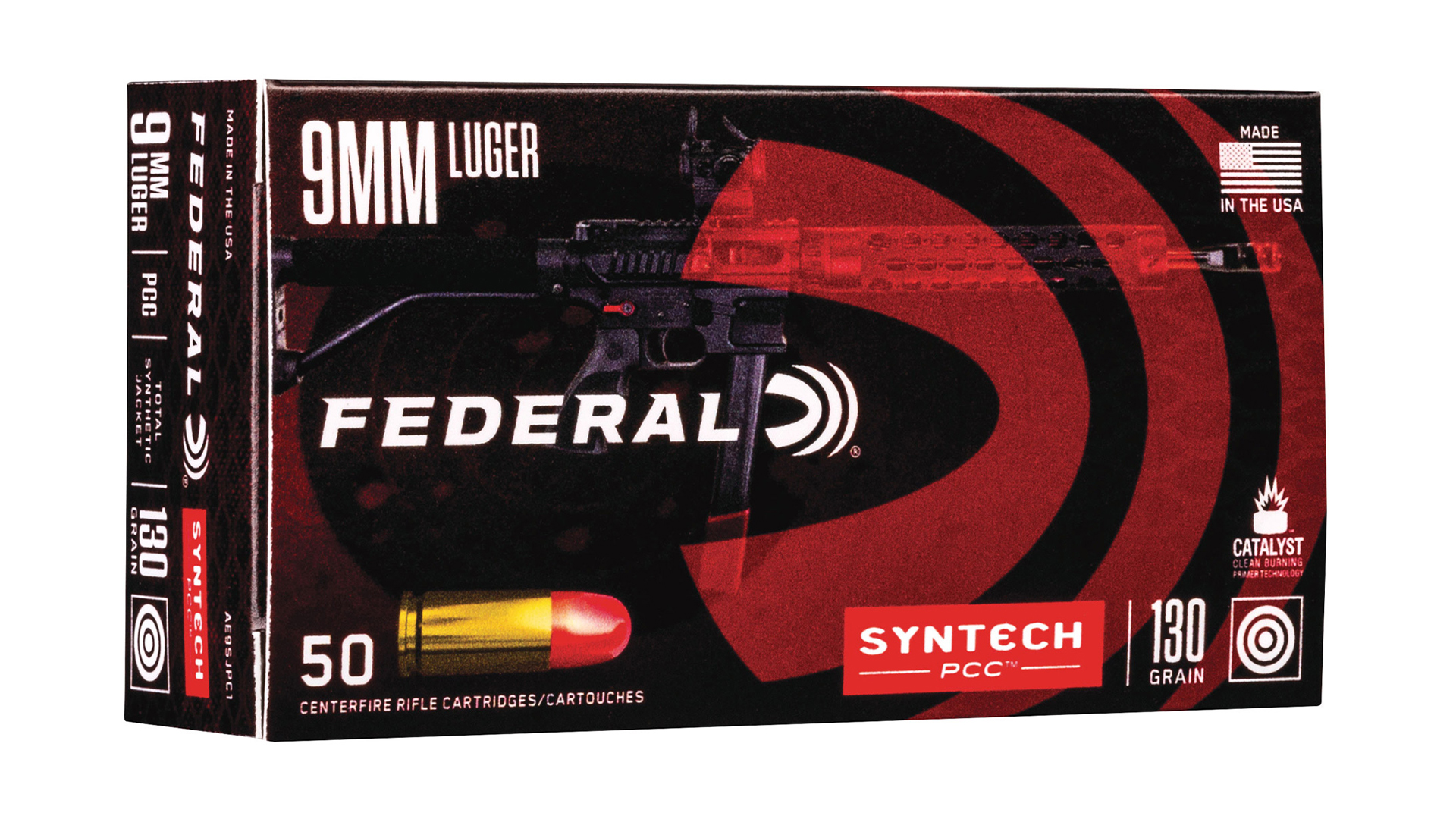
Production division is shot Minor scoring only and the 9 mm Luger cartridge predominates. Factory loads were used by 54 percent of the shooters, with 46 percent handloading. Coated lead bullets were chosen by 40 percent.
Single Stack division may be shot Minor or Major, with the .40 S&W the minimum caliber for Major. That was chosen by 33 percent, with 40 percent opting for 9 mm Minor and 27 percent for .45 ACP. Handloaded ammo was used by 70 percent and coated lead shot by 57 percent.
Carry Optics is nothing more that Production with a reflex sight. The 9 mm Luger cartridge dominates, with 57 percent handloading their ammunition and 44 percent using jacketed, 43 percent coated lead and 13 percent plated.
Limited and Limited 10 are another Minor or Major scoring division, with .40 S&W the minimum for Major. Handloaders comprised 74 percent of the shooters with .40 S&W (indicating Major) used by 83 percent, with 14 percent favoring 9 mm Luger and 3 percent opting for .45 ACP. Coated lead was used by 57 percent, with the rest choosing jacketed or plated slugs.
Limited Optics is a new addition and shot Minor only. The 9 mm Luger cartridge was used by 95 percent of the shooters, but only 32 percent chose coated lead, while 53 percent used jacketed and 15 percent went with plated. That’s a bit off from the other divisions, but more than made up for by Revolver division.
Revolver can be shot Major or Minor and 9 mm Luger is allowed for Major. The majority—97 percent of shooters—loaded their own ammo and a whopping 76 percent chose coated lead.
Although they’ve only been around for a decade, it’s obvious that serious shooters are discovering the advantages of coated lead bullets.









